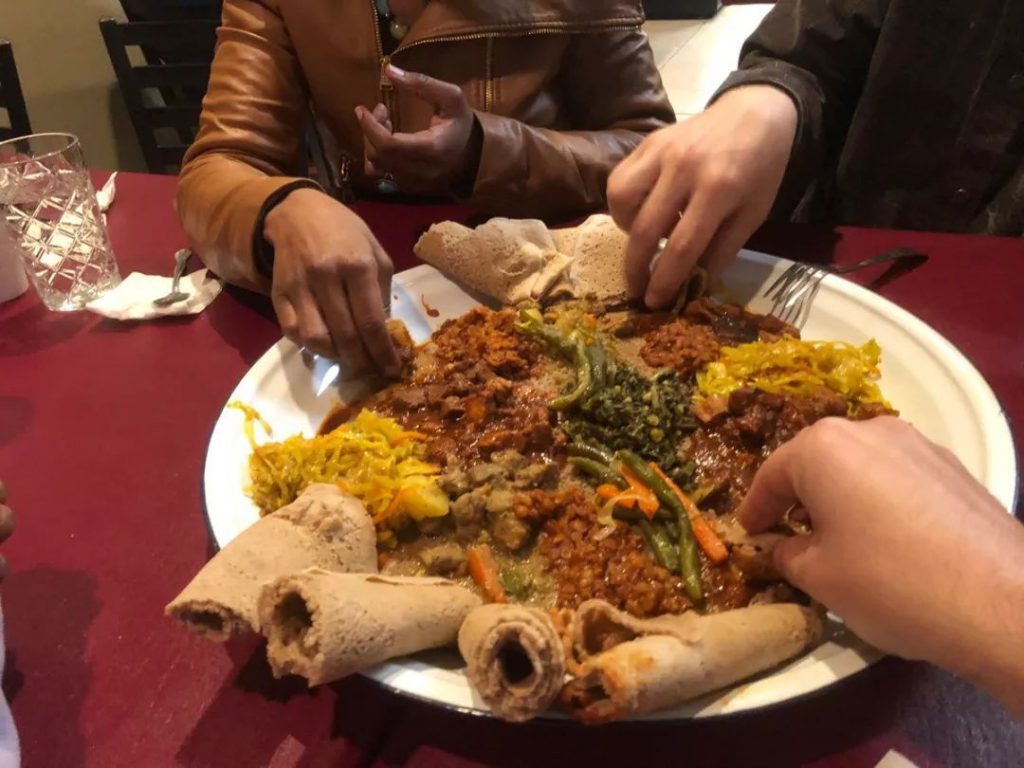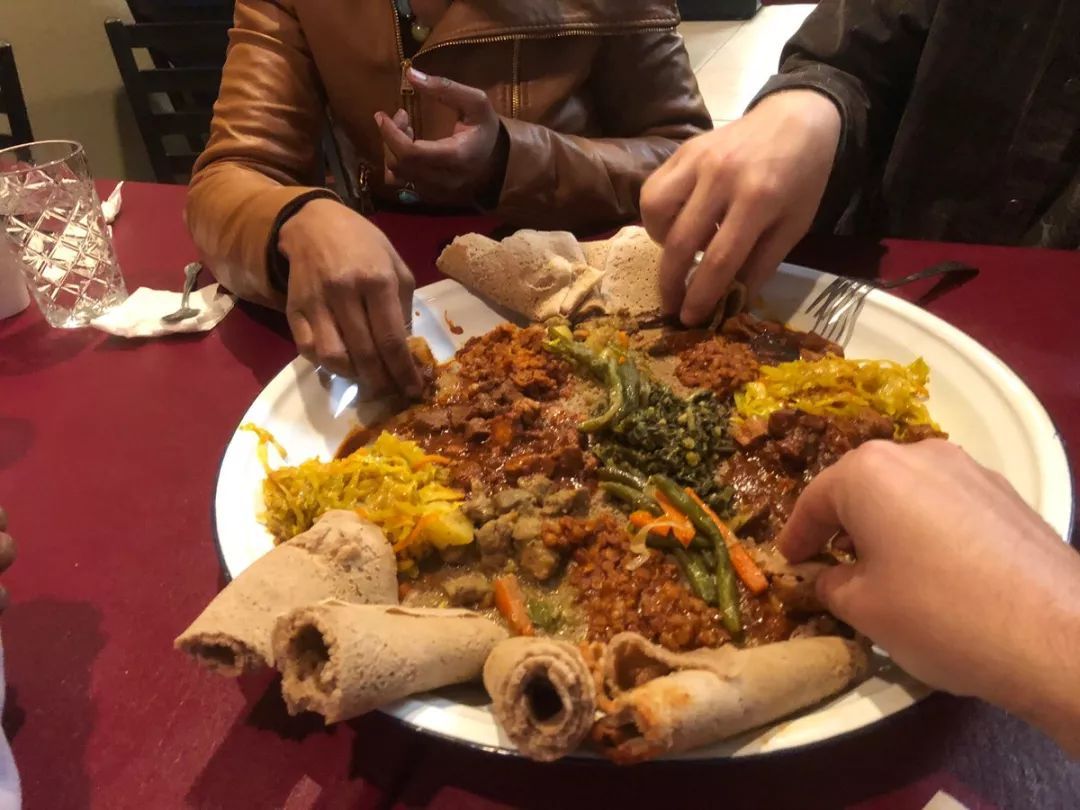Ethiopian cuisine is known for its bold flavors, variety of spices, and communal dining experience. Some popular dishes in Ethiopian cuisine include:
- Injera: A sourdough flatbread made from teff flour, injera is a staple in Ethiopian cuisine. It serves as both a plate and utensil, with various dishes being placed on top of a large piece of injera, and smaller pieces used to scoop up the food.
- Doro Wat: A spicy chicken stew made with berbere (a spice blend consisting of chili peppers, garlic, ginger, and other spices), onions, and sometimes hard-boiled eggs. Doro wat is often considered the national dish of Ethiopia.
- Tibs: A dish made with sautéed or grilled meat, usually lamb, beef, or goat, and seasoned with various spices such as rosemary, garlic, and onions. Tibs can be served in varying levels of spiciness and is often accompanied by vegetables.
- Kitfo: A dish made from raw minced beef, seasoned with mitmita (a spice blend made from chili peppers, cardamom, cloves, and salt) and niter kibbeh (a spiced clarified butter). Kitfo can also be served lightly cooked (lebleb) for those who prefer not to eat raw meat.
- Shiro: A thick stew made from ground chickpeas or split peas, cooked with onions, garlic, and berbere. Shiro is a popular vegetarian dish and can be found in many Ethiopian restaurants.
- Alicha: A mild stew made with vegetables, legumes, or meat, seasoned with turmeric, ginger, and garlic. Alicha dishes tend to be less spicy than other Ethiopian stews due to the absence of berbere.
- Gomen: A vegetarian dish made from collard greens sautéed with onions, garlic, and niter kibbeh. Gomen can be served as a side dish or as part of a larger platter of mixed dishes.
- Fasolia: A dish made from green beans and carrots cooked with onions, garlic, tomatoes, and ginger, often served as a side dish or part of a mixed platter.
- Fitfit: A dish made from shredded injera mixed with spices, vegetables, or meat. Fitfit is often served as a breakfast dish or a side dish in Ethiopian meals.
These are just a few examples of popular Ethiopian dishes that showcase the country’s diverse flavors and unique culinary traditions. Ethiopian meals are often enjoyed in a communal setting, with friends and family gathered around a shared platter of food, eating with their hands and using injera to scoop up the various dishes.
In addition to the popular dishes already mentioned, Ethiopian cuisine also includes a variety of beverages, snacks, and desserts:
- Tej: A traditional Ethiopian honey wine, tej is sweet and slightly fizzy, made from fermenting honey with water and a special type of hops called gesho. It is often served in a bulb-shaped glass called a berele.
- Tella: A traditional Ethiopian beer made from fermented barley and other grains, tella is usually brewed at home and served in social gatherings.
- Coffee ceremony: Ethiopia is considered the birthplace of coffee, and coffee ceremonies hold a significant cultural and social role. Green coffee beans are roasted, ground, and brewed in a traditional clay pot called a jebena. The coffee is served in small cups, often with sugar or salt, and sometimes accompanied by popcorn, bread, or other snacks.
- Kolo: A popular Ethiopian snack made from roasted barley, kolo is often served during coffee ceremonies or enjoyed as a simple snack. It can also include roasted peanuts, chickpeas, or sunflower seeds.
- Dabo Kolo: Small, crunchy, baked or fried pieces of dough seasoned with spices like berbere or mitmita. Dabo Kolo is a popular snack often enjoyed with coffee or tea.
- Himbasha: A slightly sweet Ethiopian bread flavored with cardamom, himbasha is often served during special occasions or religious celebrations.
- Defo Dabo: A dense, moist bread made from wheat flour and spiced with cardamom and cloves. Defo Dabo is traditionally baked wrapped in enset (false banana) leaves, which imparts a unique flavor.
Ethiopian cuisine is known for its diverse range of flavors, which come from the various spices, herbs, and ingredients used in its dishes. The culture of communal dining and sharing meals is an essential aspect of Ethiopian food, emphasizing the importance of family and social connections. This variety of flavors and culinary experiences make Ethiopian cuisine a unique and enriching gastronomic adventure.

